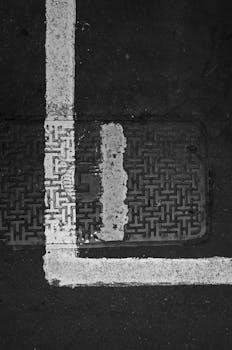PleurX Catheter⁚ Overview
A PleurX catheter is a small, flexible tube placed to drain excess fluid from the chest or abdomen․ It allows patients to manage fluid build-up at home, reducing hospital visits․ This system includes a catheter and drainage bottles, often used for recurrent pleural effusions or malignant ascites․
What is a PleurX Catheter?
A PleurX catheter is a specialized, soft, and flexible tube designed for long-term, intermittent drainage of fluid build-up․ It’s typically inserted into the pleural space, which is the area surrounding the lungs, or the abdominal cavity to manage fluid accumulation․ This catheter system is a tunneled device, usually placed as an outpatient procedure, and allows patients to drain excess fluid comfortably at home․ It aims to reduce the need for repeated hospital visits for fluid removal, which is particularly beneficial for those experiencing recurrent fluid buildup․ The PleurX catheter system consists of the catheter itself and vacuum drainage bottles or bags for collecting drained fluid, providing a convenient and manageable solution for fluid management․ It also can be used for the delivery of medication in some cases․ This system offers patients greater independence and control over their care while improving their overall quality of life․

PleurX Catheter Placement
The PleurX catheter is typically placed as an outpatient procedure․ A small incision is made, and the catheter is tunneled under the skin into the pleural or abdominal space․ The end of the catheter is capped or connected to a drainage bag․
Procedure Duration and Post-Procedure Care
The PleurX catheter placement procedure usually takes about 45 minutes to one hour to complete․ After the procedure, you will be taken to the Post-Anesthesia Care Unit (PACU) to recover․ You will need to remain in bed until you are fully awake․ Once you are fully awake, you will either return to your hospital room or be discharged home, depending on your specific situation and the doctor’s instructions․ It is essential to follow the post-procedure instructions provided by your healthcare team․ This typically involves monitoring the insertion site for any signs of infection, pain management, and keeping the area clean and dry․ You may also need to avoid strenuous activities for a certain period to allow for proper healing․ The medical staff will provide specific guidance on what to expect and how to care for the insertion site at home․ This includes information on when to follow up with your healthcare provider․
Catheter Placement Process
The PleurX catheter placement process involves the insertion of a flexible catheter into the pleural space, which is around the lungs or into the abdomen for ascites․ Initially, the provider will make a small incision․ The flexible PleurX catheter will then be passed through a tunnel under the skin․ This catheter will then enter into the pleural or abdominal cavity․ The end of the catheter will exit through another small incision․ Often, the visible end of the catheter will be capped․ Sometimes, instead of a cap, a drainage bag may be attached․ Your doctor will inform you whether you will have a cap or a drainage bag․ This procedure is typically performed as an outpatient procedure․ The PleurX catheter is tunneled to help reduce the risk of infection, as the tunnel acts as a barrier․ The insertion process is guided by imaging techniques to ensure correct placement․

PleurX Drainage Procedure
The PleurX drainage procedure involves using a vacuum bottle to remove fluid from the chest or abdomen․ It’s typically done at home, following specific steps․ The procedure includes connecting the drainage line, allowing fluid to flow into the bottle, and ensuring proper disposal․
Drainage Supplies and Kit Contents
A typical PleurX drainage kit contains essential items for performing the drainage procedure effectively and safely at home․ The core component is a vacuum bottle, available in either 500 mL or 1,000 mL sizes, which creates the suction necessary for fluid removal․ The kit also includes a PleurX procedure pack, which typically holds sterile gauze pads, a foam pad to protect the skin around the catheter site, a valve replacement cap to maintain a closed system after drainage and sterile gloves to maintain aseptic technique․ These supplies are crucial for ensuring a clean and safe drainage process․ Additionally, some kits may include a lockable drainage line, which can be used with either a glass vacuum bottle or wall suction, depending on the specific needs of the patient․ It is crucial that all the items in the kit are used as instructed in order to avoid contamination and ensure proper functioning of the drainage system․ The flexible PleurX catheter, though not a part of the kit, is also essential to the entire procedure as it is the component connected to the drainage bottle․
Step-by-Step Drainage Instructions
Before initiating the drainage process, it’s crucial to gather all necessary supplies and thoroughly wash your hands for one minute․ Begin by opening all packaging and unfolding the blue wrapping, placing the vacuum bottle nearby․ Ensure the roller clamp on the drainage line is completely closed to prevent fluid leakage․ Next, remove the old dressing from around the catheter site․ Connect the drainage line to the PleurX catheter, ensuring a secure fit․ Now, open the roller clamp to allow fluid to flow into the vacuum bottle․ Monitor the fluid flow and be attentive to any discomfort experienced during the drainage․ If pain occurs, slow the drainage rate, and if needed, take prescribed pain medication 30 minutes before the procedure․ Drainage is complete when fluid flow stops or the patient experiences discomfort not relieved by slowing the flow․ Once drainage is finished, close the roller clamp, disconnect the drainage line, and apply a new dressing․ Remember, at any one time, do not drain more than 1000 mL from the chest or 2000 mL from the abdomen․
Drainage Volume and Frequency Guidelines
When using a PleurX catheter, adhering to specific guidelines for drainage volume and frequency is essential to ensure patient safety and comfort․ For chest drainage, it is generally advised not to drain more than 1000 mL of fluid at any one time․ Draining excessive amounts can cause discomfort and may lead to complications․ When draining fluid from the abdomen, the guidelines are slightly different․ Patients should drain to their comfort level, but if draining less than 1000ml, it may be too frequent; if more than 2000ml, it may not be frequent enough․ Regular monitoring of drainage amounts is crucial․ If you experience pain during drainage, slow the flow or consider taking pain medication 30 minutes prior․ Always follow your doctor’s instructions regarding drainage frequency, as this can vary based on individual needs and conditions․ The goal is to remove fluid effectively while avoiding complications and discomfort․ If you have any questions or concerns about the amount or frequency of drainage, always consult your healthcare provider․

PleurX Catheter Management at Home
The PleurX system is designed for home use, enabling patients to drain fluid independently․ It includes a drainage line, vacuum bottles, and a procedure pack․ Proper home management involves understanding the drainage system, dressing changes, and catheter care for safe use․
Home Drainage System Overview

The PleurX drainage system is designed to be used at home, allowing for the management of fluid accumulation in the chest or abdomen․ The system consists of several key components, including a tunneled catheter that is placed within the body, a drainage line, and vacuum bottles that collect the drained fluid․ The catheter remains in place, allowing for repeated drainage as needed․ The drainage line connects the catheter to the vacuum bottle, and it is equipped with a clamp to control the flow of fluid․ The vacuum bottles, which come in different sizes like 500 mL or 1000 mL, use negative pressure to draw the fluid out․ The system also includes a procedure pack, which contains all of the necessary supplies, such as gauze, foam pad, valve replacement cap, and gloves, to ensure a safe and sterile drainage process․ Patients or caregivers must carefully follow instructions to perform the drainage procedure correctly and maintain proper hygiene to avoid infections․ The system is designed for intermittent drainage, as per the guidance of the patient’s doctor․
Dressing Changes and Catheter Care
Maintaining proper dressing changes and catheter care is crucial to prevent infection and ensure the PleurX catheter functions correctly․ The dressing around the catheter exit site should be changed regularly, usually every few days, or more frequently if it becomes soiled or wet․ When changing the dressing, it is essential to start by thoroughly washing your hands with soap and water for a full minute to maintain a sterile environment․ Then, carefully remove the old dressing and inspect the site for any signs of infection, such as redness, swelling, or drainage․ Clean the area around the catheter exit with an antiseptic solution, following the guidance of your healthcare provider․ After cleaning, apply a new sterile dressing, ensuring it covers the exit site completely․ Be careful not to pull or tug on the catheter during the process․ Regularly check the catheter and drainage line for any kinks or obstructions; Always keep the catheter capped when not in use and be sure to use the valve replacement cap as needed․ Follow your healthcare provider’s specific instructions for dressing changes and catheter care․



